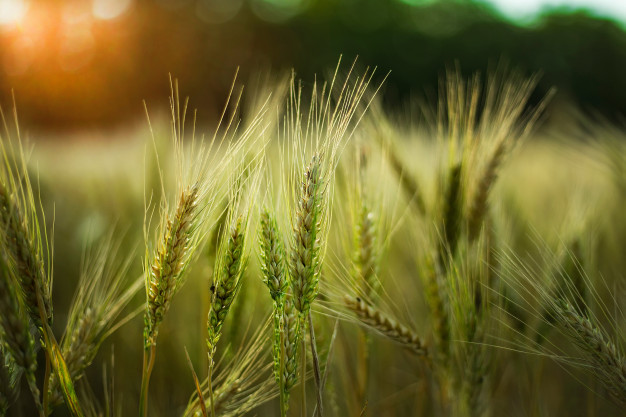Cash crops are agricultural crops grown for profit. They are the major income earning sectors for the rural economy. It is responsible for about 41.49 per cent of employment in India. Cash crops serve a very big role in the export industry of the country, especially for developing and underdeveloped countries.
In India, the major cash crops are Sugarcane, Cotton, Coffee, Jute, Tobacco, Oilseeds, etc. There about 22 cash crops in India. Let us discuss some of the cash crops in detail:
1. Sugarcane
Sugarcane, a stalky plant with fibres at each internode. They belong to the grass family and are 2m to 6m tall. They are usually found in India, New Guinea, and Southeast Asia. Austronesian traders introduced it to India from 1200 to 1000 BC.
Sugarcane was considered an expensive and opulent spice from India. India is the second-largest producer of sugarcane after Brazil; accounting for 20% of the Global Sugarcane Production.
Sugar juice and bagasse are the major products derived from sugarcane. A lot of food production comes from Sugar juice: Raw sugarcane juice, Syrup, Molasses, Jaggery (predominantly in India), Rum, Rock candy, etc.
Bagasse is the dry pulpy fibrous residue of sugarcane after it has been extracted from all its juice. Bagesse is used as biofuel for the production of energy and heat.
2. Cotton
Cotton is a white fluffy fibre in a ball shape. It is a shrub plant native to tropical and subtropical regions around the world, including India. Under the Mughal Empire, the production of cotton increased. India is the world’s largest producer of Cotton whereas the USA is the largest exporter.
Cotton is mainly used to make clothing and woven fabrics for fashion as well as household products. In fact, almost 7 out of 10 things in your household are made of cotton or at least, contain cotton. From bed linens, furniture, tablecloth, toys, dolls, stuffed animals, seats for car, and even book bindings.
Besides clothing, Cottonseed Oil is a vegetable oil made from the seeds of cotton plants. It is used for cooking.
3. Coffee
Coffee or more specifically, coffee beans are mostly sold in their roasted form. The country of origin is Yemen. Sufi Baba Budan, who had stuffed seven coffee seeds into a strap over his chest, first traded coffee into India around the 16th century. India accounts for almost 4% of global coffee production.
Coffee is mostly used to produce roasted coffee beans, which are ground and are made into different coffee drinks depending on the solvent. For example iced coffee, macchiato, espresso, etc. Coffee is famously known for its effect on alertness after drinking it. The leftover coffee grounds can be used as compost, insect repellers, etc.
4. Jute
Jute is a blast fiber. It is long, soft and a green plant. India is the largest producer of Jute in the world. Most of the production is concentrated in Bangladesh as well as Assam, Bihar, and West Bengal.
Jute fiber is extracted from the retted stem of its plants. Jute is made into rope, twine, and bags; ranging from grocery bags to gunny sacks for storing grains. In Kerala, mats and rugs are produced using handlooms and power looms.
Jute is also used in making paper, due to the environmental
implications of wood pulp only. It has been used extensively in the textile industry and now has a promising future in the wood
industry.
5. Tobacco
Tobacco is produced from the Tobacco plant, which is dried in the form of cured leaves. The plant is dried and fermented. It contains nicotine alkaloid; a highly
addictive drug that leads to addiction. India is the second-largest producer of Tobacco, and around 80% of tobacco is grown in the states of Andhra Pradesh (44%), Gujarat (24%), and Karnataka (15%).
Tobacco is consumed in the form of Beedi, snuff, chewing tobacco, cigars, cigarettes, and Hookah among others. Tobacco is a cause of major diseases including cancer. The most affected areas are usually the heart, lungs, and liver. According to WHO, more than 10 million die each year due to tobacco consumption in India.
In 2003, the Ministry of Law and Justice passed a law that prevented the advertisement of cigarettes in the media.
6. Oilseeds
Oilseeds or vegetable oil is extracted from the seeds of plants. India’s vegetable oil economy is the fourth largest after the USA, China, and Brazil in the world. India primarily uses the Ghani method for pressing oilseeds, expellers, and solvent methods are also used. However, the solvent form of processing is the quickest and least expensive.
Oilseeds are mostly used in cooking as they are mostly
edible. Different oilseeds produce different flavours. Examples range from coconut oil to almond oil. Olive oil is particularly costly because it is cold extracted which means the temperature must remain below a certain degree throughout the entire process.
Oilseeds are also used as hair oils to enhance the strength of hair fibres in the form of vitamins and nutrients. In addition, oilseeds also produce massage oil; used to relieve stress and anxiety in the body through massage.
To support the cash crop industry, the fertilizer industry is constantly updating its products to enhance the production of crops. And even better than fertilizers is organic fertilizers which are helpful to both the farmers and the earth. Here at Nivshakti Bioenergy Pvt Ltd, we offer innovative and eco-friendly solutions to cater to the agriculture/plantation problems.
We care about our consumer’s health and put it first and foremost among other things. Therefore, we have introduced products such as eco-friendly disinfectants. As one of the best organic fertilizer manufacturers in India, we realize the responsibility we carry in serving one of the largest agriculture industry in the world. For more queries and information about us, contact us here. Visit
Niv Shakti’s website for more information.
